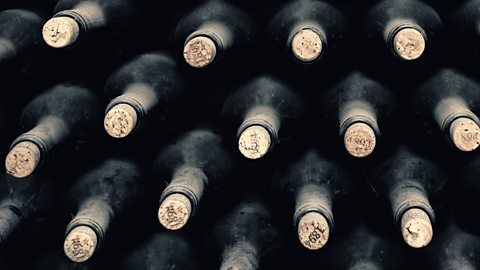Fake wine – honestly, it’s a thing.
Who better to investigate counterfeit wines for Radio 4 than The Wine Detectives. Here’s what was uncorked.

It’s a multi-million-pound business
Inflation in the market means that fine wines have gone up five times in value. The production of very fine recent wines masquerading as vintage and rare only carries a prison sentence of two years in France, for example… so for the criminal, it’s seen as highly lucrative, not always easy to detect, and worth the risk of being caught.
Who counterfeits wine?
The most famous wine counterfeiter of recent times is Rudy Kurniawan. When the police raided his home, they found fake labels, old bottles, and recipes in his kitchen for how to recreate famous wines. Police reckon that $550m of Kurniawan’s wine is still on the market, masquerading as the genuine stuff.
What raises the suspicions of the Wine Detectives?
Sketchy details about the provenance. If you were buying an Old Master you’d expect provenance and certification. You need the same when you're buying wine.
Why is it tricky to spot?
Wine dealers Corney & Barrow say it is more difficult to authenticate old wine, as the wine pro-ducers never expected the wine to be counterfeited, or indeed collected – they just expected it to be drunk. Old bottles can be re-used, for example, and they are commonly resold for vast amounts on Ebay: so establishing consistency is difficult.
How do the Wine Detectives spot a fake?
Blurriness on the labels, the wrong colouring on the labels, poor quality label paper, the wrong period glass in the bottles or the wrong corks.
What happens when they find fake wine?
The wines are sequestered, occasionally drunk, or destroyed. The most important thing is that the fake wine is removed from the market.
What raises the suspicions of the Wine Detectives?

What raises the suspicions of the Wine Detectives?
Wine Detective, Maureen Downey talks about her work sniffing out counterfeit wine.
What’s a “unicorn” wine?
Like the fabled, fabulous creature, “Unicorn” wines are wines that don’t exist. A little bit of knowledge and research can show that a wine from a particular vineyard was never actually made. For example, some bottles of “1985 Romanée-Conti” (a Burgundy Grand Cru) came on to the market. But in 1985 the vines in that particular vineyard were stricken with phylloxera, and only two barrels of the wine were produced: they did not bottle any magnums. Yet seemingly, magnums of 1985 Romanée-Conti are out there, being sold.
Some of these counterfeiters could have been very good authenticators but unfortunately they went to the dark side...Fine Wine Expert, Michael Egan
How are the wine producers fighting back?
They’ve called in banknote specialists to create the labels, they’re using laser etching on the bottles and fitting tamper-proof caps. And in a startling bit of innovation, in France nuclear scientists are testing the wines for a radioactive element that was not in the atmosphere pre-1950, allowing them to spot more recent creations.
How can I protect myself from fake wine?
The wine dealers suggest buying your wine from official dealers, checking provenance carefully, and doing your research.
Ultimately, the same rule applies for avoiding fakes in wine as it does in any other area of collect-ing and investment: if it seems too good to be true, it probably is.
-
![]()
Listen: The Wine Detectives
Susie Barrie follows the experts employed to tell fine wines from fakes.




